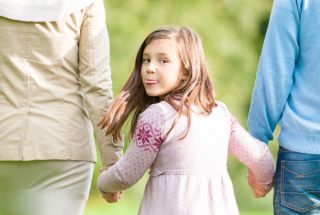by Heather Kappes, Department of Management
As part of our project studying the roots of financial resilience in childhood (funded by the Institute of Global Affairs (IGA) at LSE and supported by the Rockefeller Foundation), Matteo Galizzi and I have been collecting data from children, ages 4-12. Recently, we’ve started to contact young participants along with their parents or guardians at the V & A Museum of Childhood in east London.
While at the museum, we’ve had several interesting conversations with parents, most of whom have been very supportive of the work and open to sharing their time and thoughts.
One couple told us about the child-specific debit card that their employer sold, and described how they used it to help their own children learn to budget. A grandmother, watching her grandsons play with the rubber balls they’d earned minutes earlier, talked about how her daughter and son-in-law only allowed wooden toys, and no plastic, at home, in an effort to build appreciation of quality and longevity. A recently-divorced father explained how the questions about materialism—to what extent one pursues and derives happiness from possessions—hit close to home in light of his newly tightened budget. Another father brought his daughter back an hour after she’d taken part, so that we could explain to her why good research methodology meant that even though she wanted to, she couldn’t do the study again. (This same father had earlier asked me to explain to the child what “economics and political science” meant. It wasn’t easy!)
Adults weren’t the only ones who surprised us; many children did too. As part of the study, we show the child participants 4 small age-appropriate toys—things like a bouncy ball, a toy car, or a marker—and ask them to arrange them from best to worst. We turn the arrangement into a shop, where it just so happens that the children, using play money we give them, can only afford the 3rd-best. Among other things, we’re interested in who decides to wait to see if they can buy something better later, and how this might be influenced by what we tell them about what another child did.
The last thing we do is to give those children who waited enough additional play money so they can buy the toy they said earlier was the best. We thought this would be a straightforward reward. Would you believe that at this point, more than one child chose a different one? One asked for the 2nd-best; having seen that it was priced higher than the best one in the “shop”, he concluded it must be better. Others chose the 3rd-rated toy that they’d passed up minutes before, noting that although it wasn’t the best, they liked it and wanted it.
Some children had an impressively nuanced understanding of the forces that govern spending. They might tell us that most people who spend money “feel happy because they got something good, but sad because they don’t have their money anymore.” These are the kinds of rich levels of reasoning that we’d miss in a less personal method of data collection.
We’ve been able to do this data collection, and to talk with the wide variety of families coming through the Museum of Childhood, because of the support of the Centre for Childhood Cultures, a formal partnership between the V&A and Queen Mary University of London. Researchers affiliated with the Centre are interested in children’s everyday lives, past and present. It wasn’t so long ago that young children were responsible for earning money to help support their families (in some parts of the world, they’re still doing this today).
Even as modern ideas about childhood have tried to free children from this responsibility and pressure, our research suggests that from an early age, they still have strong ideas about what it means to have—or lack—money. As this research continues, we hope to be able to better help children and families to be resilient against financial hardship. Being able to provide that help in the future starts by being open to learning from children and families what they already think about and do with money.





